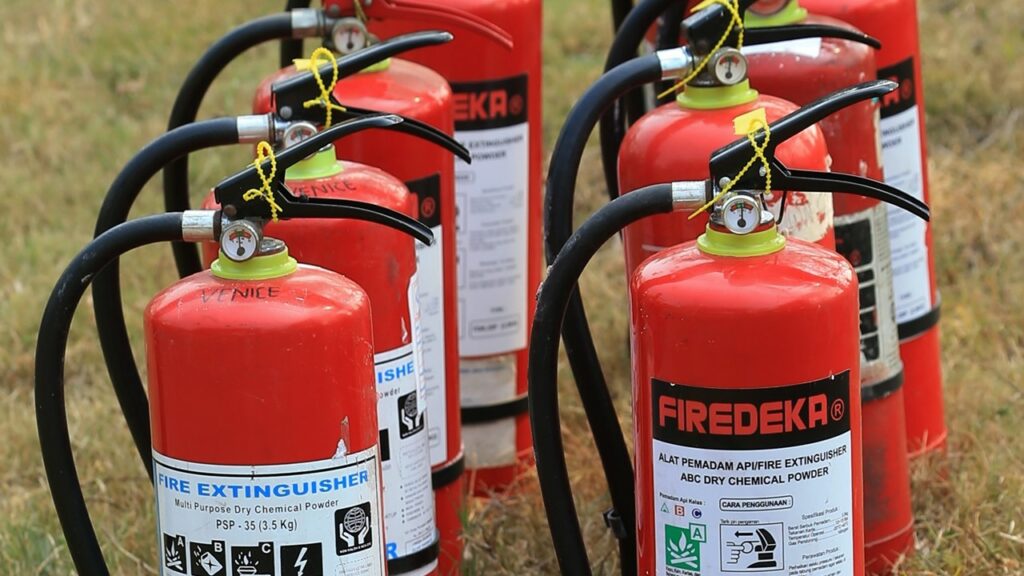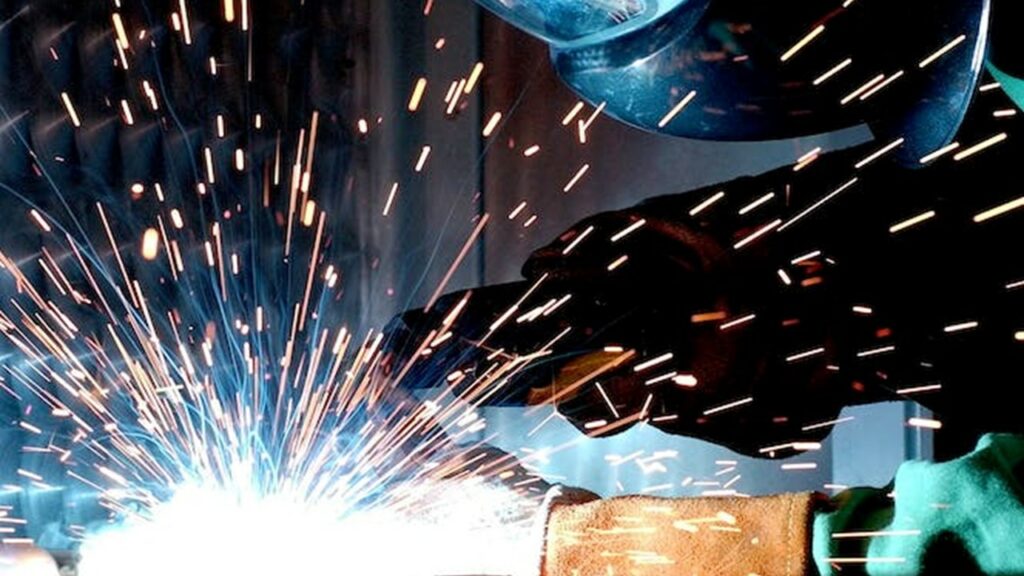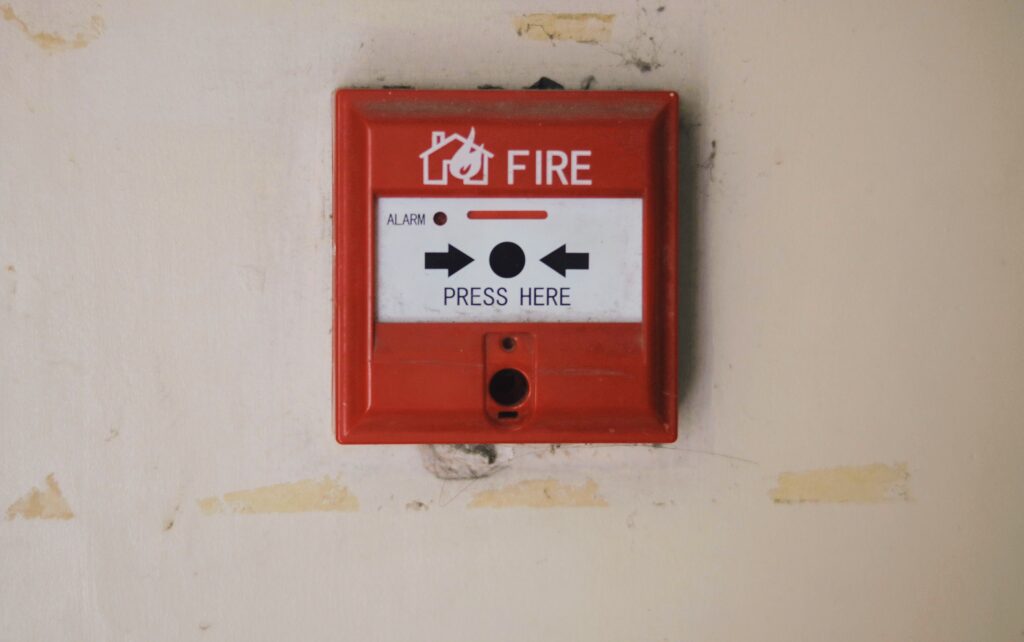Workplace Fire Hazards: Identifying, Preventing, and Mitigating Risks for a Safer Workspace

Fire represents one of the most devastating workplace hazards, easily claiming multiple lives and livelihoods in minutes.
To safeguard employees and business continuity, organisations must be fully versed in recognising and controlling fire hazards posed by their environments, procedures, workforce behaviors and other factors.
This article provides an in-depth look at sources of workplace fire hazards, responsibilities in reducing risks, and practical ways to align working practices with vital fire precautions.
Defining Fire Hazards
Fire hazards refer to potential sources of ignition that could lead to a fire, as well as conditions likely to accelerate flame spread or hamper containment.
Key Fire hazards include:
- Ignition Sources – Heat/flame devices, electrical faults, static buildup, friction.
- Fuel Sources – Flammable chemicals, gases, liquids, excessive combustible materials.
- Fire Spread Hazards – Lack of fire doors or walls, sprinklers, cluttered paths impeding escape or response.
What is fire hazard in the workplace?
A holistic view encompassing ignition risks, available fuels, and deficient barriers provides the full spectrum of hazards to address.
Fire hazards in the workplace refer to situations, conditions or materials that increase the risk of a fire starting or spreading in a work environment.
Some common examples of fire hazards include:
- Faulty electrical equipment like frayed wires, overloaded outlets, or malfunctioning appliances. These can ignite nearby combustibles through excessive heat or sparks.
- Accumulation of flammable and combustible materials like chemicals, fuels, paper products, dust, textiles, plastics, etc. These provide fuel to rapidly spread a fire.
- Improper use or storage of ignitable liquids like solvents, grease, and gasoline that can be easily ignited with an ignition source.
- Presence of ignition sources like open flames, hot surfaces, smoking, welding activities, etc. These can provide the heat needed to bring fuels above their ignition temperatures.
- Lack of regular maintenance and cleaning of potential ignition sources like stoves, electrical systems, machinery, boilers, etc. This allows hazardous accumulations of grease, lint, dust, or debris.
- Blocked or limited access to fire protection equipment like extinguishers, alarms, and sprinklers. This delays fire suppression.
- Lack of employee training and organizational policies related to fire prevention, response plans, exit routes, etc. This leads to unsafe practices.
Controlling these types of fire hazards through good housekeeping, maintenance, training, and adhering to fire codes helps reduce occupational fire risks and protect workers.
Recognising and Preventing Fire Hazards in the Workplace
Fires can pose significant threats to workers, disrupt business operations, and result in sizable property damage.
Employers have an important role to play in actively identifying fire hazards in the workplace and mitigating the associated risks.
By understanding regulations, implementing prevention best practices, and promoting a culture of safety, organisations can reduce both the likelihood and impact of workplace fires.
Identifying and Assessing Fire Hazards
The first step is recognising potential fire hazards within the workplace.
Some areas to assess include:
1. Electrical – frayed cords, overloaded circuits, outdated wiring. Any damaged or improperly used electrical equipment can ignite surrounding materials.
2. Heating Appliances – accumulation of dust, grease and other debris around stoves, ovens, boilers, or other heat sources. Lack of maintenance heightens fire risks.
3. Chemical Storage – flammable liquids, solvents, gases that are not properly labeled, stored and segregated heighten risks.
4. Housekeeping – accumulation of combustibles like paper, cardboard, textiles, wood shavings provide fuel for fire spread.
5. Smoking – permitting smoking indoors or in unauthorized areas, unsafe cigarette disposal.
6. Equipment – welding, open flames, sparks from machinery near flammables. Lack of maintenance or fire watch.
Once potential sources of ignition and flammable materials are identified, the level of risk should be analyzed by considering likelihood of occurrence and severity of potential consequences.
This allows prioritization of fire prevention strategies.
Online Fire Safety Training – Click Here

The most common causes of workplace fires are electrical faults (20%), smoking materials (15%), and hot work (10%). | 2022-2023
Controlling and Mitigating Fire Risks
Once hazardous areas are assessed, action should be taken to control risks.
Examples of fire risk preventive measures include:
– Implementing proper storage procedures for flammables like chemicals, gasses, solvents.
– Increasing housekeeping frequency to avoid buildup of combustibles.
– Establishing and enforcing clear smoking policies, providing safe ash trays.
– Regular inspection and maintenance of potential ignition sources like electrical systems and heating units.
– Installing and testing fire detection, suppression and control systems like alarms and sprinklers.
– Ensuring adequate fire separation and containment measures are in place.
– Providing appropriate portable extinguishers and training workers on proper type and use.
– Using protective equipment and standard procedures when working with hot works, open flames, or other heat sources.
The specifics will depend on the workplace activities and identified fire risks.
The aim is to control hazards through safer equipment, processes, training and emergency preparedness.
Fire Safety Regulations and Compliance
There are numerous workplace fire protection regulations that employers must comply with.
For example:
– Having clearly marked, unblocked emergency exits and egress routes.
– Maintaining fire separation walls and self-closing fire rated doors.
– Installing and maintaining automatic sprinklers in most jurisdictions.
– Conducting emergency evacuation drills at specified intervals.
– Providing adequate portable fire extinguishers and signage.
– Eliminating use of extension cords as permanent wiring solutions.
– Storing flammable liquids properly in approved containers and cabinets.
– Obtaining hot works permits as required when welding, torching, etc.
– Meeting electrical code requirements on outlets, wiring ratings, junction boxes.
Failure to comply with relevant fire codes can result in significant regulatory fines and penalties in addition to heightened risks.

In 2022/23, there were an estimated 1,800 fires in workplaces in the UK.
Best Practices for Workplace Fire Prevention
Beyond mandatory codes, employers should also implement best practices for protection:
- Have a designated fire safety director and written emergency plans.
- Provide regular training to employees on hazards, prevention, and emergency response.
- Control potential ignition sources like smoking, hot works, electrical use.
- Conduct routine inspections and address any identified hazards immediately.
- Maintain good housekeeping and organize storage to reduce fuel sources.
- Manage waste regularly to avoid accumulation of combustibles.
- Report all fires, even minor ones, and investigate causes.
- Audit emergency systems regularly in a comprehensive fire risk assessment.
- Consider upgrades like enhanced detection systems and sprinklers.
- Limiting clutter, signage and decorations made from flammable materials.
Continuously identifying and controlling fire risks, training workers, and preparing emergency responses helps prevent workplace fires.
Promoting vigilance and a culture of safety from leadership down further reduces fire hazards.
Workplace fires endanger workers and disrupt business.
While the potential for fires can never be fully eliminated, employers have a duty to recognise fire risks and take all reasonable precautions.
Assessing fire hazards, complying with codes, controlling risks, training personnel, and preparing emergency plans enables organisations to better prevent and respond to workplace fire events when they do rarely occur.
Staying proactive about fire safety takes commitment but pays dividends in averting unnecessary tragedy and loss.

Fires in manufacturing and industrial premises accounted for the majority of workplace fires (35%), followed by fires in retail premises (25%) and hotels and restaurants (15%). | Report: 2022-2023
Examples of fire hazards in the workplace:
Common Fire Hazards in the Workplace and How to Prevent Them
Fires in the workplace can occur due to a variety of hazards.
Being aware of potential ignition sources and flammable materials is crucial for every employer and employee to ensure fire safety.
There are several key areas to control fire risks:
1. Electrical Hazards
Faulty electrical equipment and wiring are one of the most common preventable causes of workplace fires. Things to watch out for include:
– Frayed wires or damaged cords on equipment
– Outdated wiring that cannot handle modern power loads
– Overloaded outlets and extension cords
– Appliances with accumulated dust and grease
– Lack of ground fault circuit interrupters near water sources
– Improper use of multi-plug adapters instead of power strips
Good fire practices include inspecting cords and plugs regularly, upgrading outdated electrical systems, using surge protectors, and avoiding daisy chaining extension cords.
2. Combustible Materials
Flammable solids, liquids and gases can ignite easily and help fire spread rapidly.
Pay attention to accumulation of:
– Paper, cardboard, wood shavings and textiles
– Chemicals, degreasers, cleaning agents and solvents
– Paints, coatings, inks and adhesives
– Plastics, packaging and foam materials
– Flammable textiles, curtains or upholstery
– Grease buildup in kitchens or manufacturing areas
Properly storing and segregating flammables, limiting clutter, and keeping areas clean prevents ignition risks.
3. Heating Equipment
Heat sources like stoves, ovens and heaters can ignite nearby combustibles. Risks include:
– Accumulated grease in ovens, fryers and grills
– Overloaded electrical circuits for heating units
– Placing combustibles too close to heaters or radiators
– Allowing dust to accumulate on boilers, forced air units and ventilation systems
– Poor maintenance of gas appliances and leaks in gas lines
Adequate cleaning, venting and servicing of heating systems and chimneys reduces chances of fires.
4. Smoking Materials
Lighting, matches and smoking materials are common ignition triggers. Key fire risks include:
– Allowing smoking in unauthorized areas
– Unsafe disposal of cigarette butts in trash cans
– Leaving lit smoking materials unattended
– Improper use of portable lighters and matches
Banning smoking indoors, designating safe outdoor smoking areas, providing sand-filled butt receptacles and enforcing no smoking policies prevents accidents.
5. Portable Fire Sources
Welding, open flames and other equipment that generates heat, sparks or flame can ignite materials if used unsafely. Hazards include:
– Cutting, welding, soldering near combustibles
– Blowtorches and heat guns without fire watchers
– Forklifts where hot exhaust manifolds contact flammables
– Allowing motors, pumps and machinery to accumulate debris
Proper maintenance, cleaning and separation from flammables during hot works prevents ignition. Having appropriate fire extinguishers and first aid supplies nearby also improves readiness.
With attentive housekeeping, maintenance of safety equipment, proper chemical handling and storage, and emergency preparation, employers can significantly reduce fire risks. Regular self-audits to identify and resolve fire hazards ensures a safe environment. Proper workplace fire safety benefits workers, the company and the whole community.
Start Today – Health and Safety Courses – Click Here

The most common time of day for workplace fires to occur is between 10am and 12pm. | Report: 2022-2023.
Common Work Practices Introducing Fire Dangers
Many routine business activities and behaviors inadvertently heighten fire risks:
– Smoking indoors or outdoor disposal in non-compliant receptacles
– Charging devices haphazardly like overnight unattended charging
– Using damaged electrical equipment or disabling safety features like shutdowns
– Overloading plugs through adaptors or “daisy chaining” power strips
– Allowing clutter and waste accumulations through disorderly storage or housekeeping
– Bypassing fire doors or other containment measures to ease movement
– Ignoring or covering up safety issues like malfunctioning sprinklers or alarms
– Conducting hot work like welding without permits or prescribed precautions
– Making unauthorized alterations to spaces without consulting fire codes
These common practices demonstrate how working habits intersect with and exacerbate environmental risks if left unchecked.
Most Common Workplace Fire Causes
Key statistics identify the most prevalent workplace fire triggers:
- Electrical – Responsible for around 37% of fires, including overloads, damaged cords, appliances.
- Intentional – Arson and other deliberate ignition causes 17% of fires.
- Cooking – Unattended stoves, oils, and careless practices spark 13% of fires.
- Mechanical or System Issues – Equipment overheating, malfunction, and friction ignite 10% of fires.
- Smoking – Despite bans, clandestine smoking ignites around 5% of fires.
This breakdown spotlights areas like electrical equipment and safety, arson prevention, commercial cooking protocols, machinery maintenance, and smoking enforcement as prime targets for intervention.
Implementing Safe Work Practices to Reduce Fire Hazards
Organizations can significantly reduce risks by instituting work policies and expectations aligned with fire precautions:
– Maintain tidy, organised storage areas with combustibles separated
– Enforce strict smoking prohibitions with designated outdoor areas only
– Require fire watches after any hot work like welding is completed
– Eliminate use of unsafe electrical equipment and temporary wiring
– Report safety issues immediately and halt risky work until addressed
– Keep doors, hallways and exits unobstructed for evacuation
– Follow all fire codes and permitting procedures for modifications
– Participate proactively in emergency drills and readiness exercises
Fostering a culture of safety where engagement in risk reduction is an expected duty of all personnel drastically diminishes dangers.

In 2022/23, workplace fires caused an estimated £2.3 billion in damage to property in the UK.
Fire Safety Responsibilities of Employers and Employees
Preventing workplace fires requires collaboration, with duties at all levels:
Employer Responsibilities:
– Conduct fire risk assessments covering ignition sources, fuels, containment deficiencies.
– Develop robust policies aligned to risks like hot works permitting, storage limits etc.
– Provide fire safety training to all personnel on risks, equipment, and protocols.
– Routinely inspect, test, and maintain fire systems to ensure good order.
– Correct identified deficiencies like missing extinguishers urgently.
– Keep evacuation routes clearly marked and unobstructed.
Employee Responsibilities:
– Complete all mandated fire safety training and drills.
– Refrain from increasing risks through hazardous practices.
– Know the proper use of equipment like extinguishers.
– Monitor workspace for developing hazards like clutter.
– Report any fire safety concerns promptly to supervisors.
– Follow established fire and emergency protocols.
With all parties upholding their duties, organisations create layered defenses against fire catastrophes. Visit our page that explain more fire training a staff requires and the frequency of training.
Start Today – Health and Safety Courses – Click Here
Best Practices for Preventing Fire Hazards
Top strategies to safeguard against hazardous conditions include:
- Regular audits by dedicated personnel to identify developing risks.
- Tracking near misses and reported concerns to target vulnerabilities.
- Robust maintenance programs for fire protection systems.
- Updating fire risk assessments after major operational changes.
- Monitoring industry advancements to incorporate enhanced safety technology.
- Routine drills and evacuation exercises to evaluate readiness.
- Instilling a culture where fire safety is both individual and shared responsibility.
Catching issues early and testing protections prevents complacency around catastrophic but unlikely events. Planning must evolve continually alongside operations.
In essence, reliable prevention involves layered organizational diligence coupled with an actively engaged workforce refusing to ignore the immense threat posed by workplace fire hazards.
Their forward-thinking actions distinguish organizations prepared from those destined for preventable tragedy.
Recent Blog Post
- Basic Life Support Checklist -PDF Download Available
- Safeguarding Training Levels: How to choose the right training
- Caring For Care Partners with AquAid to Support Installation of Elephant Pumps in Africa
- Wound Assessment and Documentation: Mastering Key Steps for Better Care
- Understanding Bereavement Support and Duties of Different Healthcare Groups.
Let us Help you
We’ll help you find the right course for your needs. Tell us a little bit about your situation and what you would like to achieve.
We’ll get back to you within one working day.
